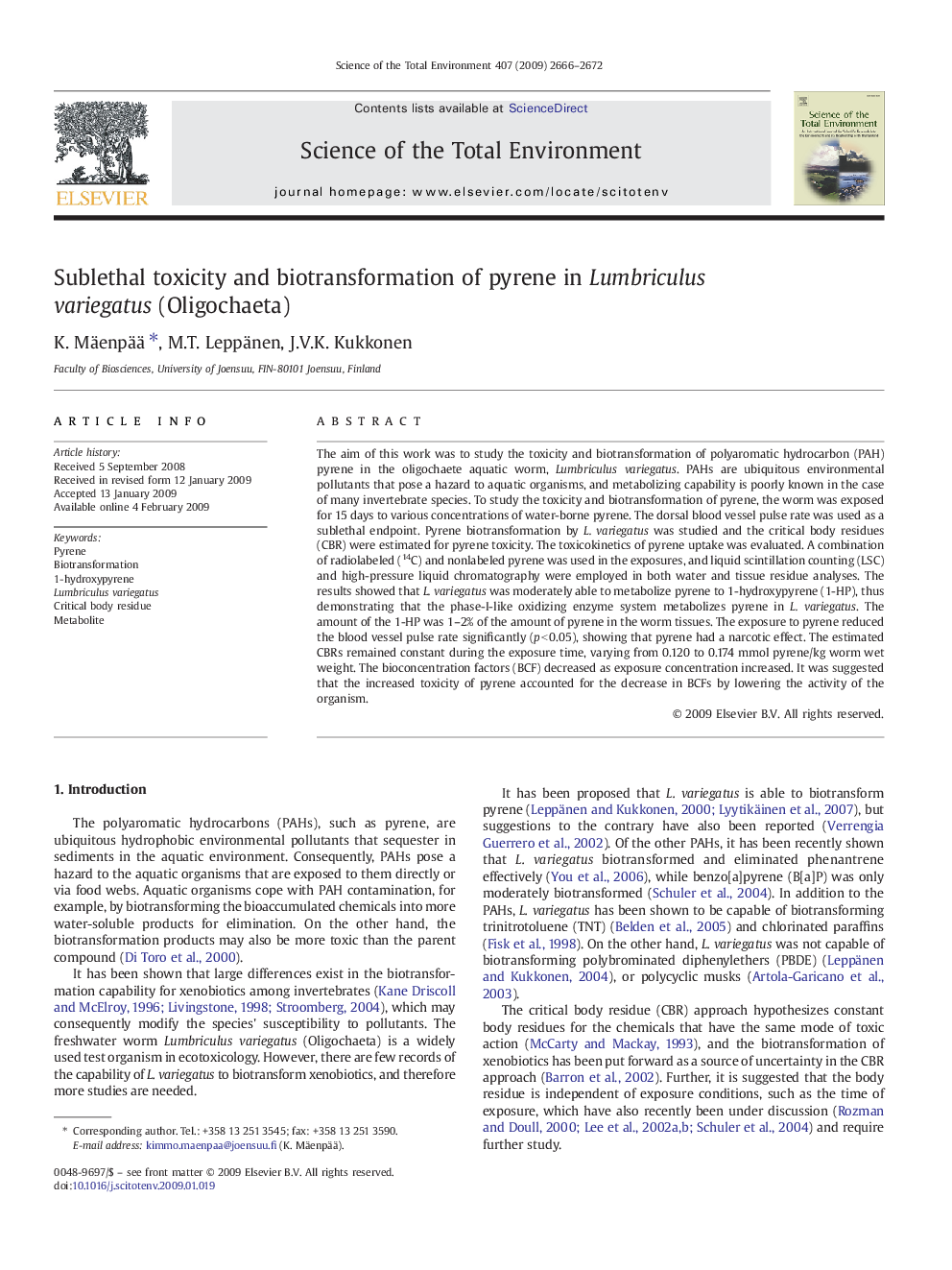| کد مقاله | کد نشریه | سال انتشار | مقاله انگلیسی | نسخه تمام متن |
|---|---|---|---|---|
| 4431955 | 1619902 | 2009 | 7 صفحه PDF | دانلود رایگان |

The aim of this work was to study the toxicity and biotransformation of polyaromatic hydrocarbon (PAH) pyrene in the oligochaete aquatic worm, Lumbriculus variegatus. PAHs are ubiquitous environmental pollutants that pose a hazard to aquatic organisms, and metabolizing capability is poorly known in the case of many invertebrate species. To study the toxicity and biotransformation of pyrene, the worm was exposed for 15 days to various concentrations of water-borne pyrene. The dorsal blood vessel pulse rate was used as a sublethal endpoint. Pyrene biotransformation by L. variegatus was studied and the critical body residues (CBR) were estimated for pyrene toxicity. The toxicokinetics of pyrene uptake was evaluated. A combination of radiolabeled (14C) and nonlabeled pyrene was used in the exposures, and liquid scintillation counting (LSC) and high-pressure liquid chromatography were employed in both water and tissue residue analyses. The results showed that L. variegatus was moderately able to metabolize pyrene to 1-hydroxypyrene (1-HP), thus demonstrating that the phase-I-like oxidizing enzyme system metabolizes pyrene in L. variegatus. The amount of the 1-HP was 1–2% of the amount of pyrene in the worm tissues. The exposure to pyrene reduced the blood vessel pulse rate significantly (p < 0.05), showing that pyrene had a narcotic effect. The estimated CBRs remained constant during the exposure time, varying from 0.120 to 0.174 mmol pyrene/kg worm wet weight. The bioconcentration factors (BCF) decreased as exposure concentration increased. It was suggested that the increased toxicity of pyrene accounted for the decrease in BCFs by lowering the activity of the organism.
Journal: Science of The Total Environment - Volume 407, Issue 8, 1 April 2009, Pages 2666–2672